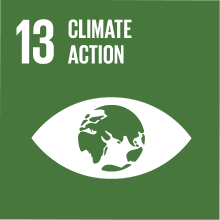SOCIAL ANTHROPOLOGY
- Academic year
- 2024/2025 Syllabus of previous years
- Official course title
- ANTROPOLOGIA SOCIALE SP.
- Course code
- FM0009 (AF:508678 AR:285084)
- Modality
- On campus classes
- ECTS credits
- 6
- Degree level
- Master's Degree Programme (DM270)
- Educational sector code
- M-DEA/01
- Period
- 2nd Semester
- Where
- VENEZIA
- Moodle
- Go to Moodle page
Contribution of the course to the overall degree programme goals
The teaching is part of the fundamental teachings of the demo-ethno-anthropological disciplines. Monographic course.
For Jean Baudrillard, objects ensure life just as dreams ensure sleep. Ideas, affections, symbols and memories are consolidated in the things that populate our daily lives; the more we are able to grasp the affective density of objects, the more our world expands and acquires depth. Design objects, fetishes, goods, gifts, domestic furnishings, souvenirs, things of affection, sacred objects, sold, collected, jealously preserved, exchanged, re-invented, museumized, given away, are constitutive and essential nodes of every form of relationship social. What is the nature of the relationships that people establish with objects? In what sense, as Arjun Appadurai stated, can we speak of a social life of things? Where does the agency of objects come from, which in every culture characterizes the seductive power of things? The concept of fetishism, at the origins of the history of anthropology, after the contributions of Marx and Freud, has undergone notable expansions in recent years, becoming a key concept for interpreting and understanding many types of contemporary artistic performances, and economic and social relationships : for example the photographic work of the South African artist Twelethu Mthethwa, which portrays furnishing objects in the shacks of the slums of Cape Town, testifying to the daily tactics of resistance to marginalization implemented through a powerful aesthetic creativity of poor objects; or in the artistic performances of Francke Anselm's German group "Animismus", which affirms the need to decolonize the concept of the animacy of things. The sensual (not just sensorial) charge of the magical objects of fairy tales and popular narratives constantly resurfaces in many contemporary design projects. For Gaston Bachelard, the wardrobe and its shelves, the secretaire and its drawers, the chest and its false bottom, are real organs of secret psychological life. Without these objects and some others so valued, our intimate life would lack a model of intimacy. They are mixed objects, object-subjects, they have, like us, through us, for us, an intimacy. With the series of lessons and two seminar workshops, this course aims to present the most advanced contemporary theories developed in the field of the anthropology of ordinary objects: from criticism to the old concept of "material culture", which relegated anthropological interests only to objects trivially defined as "ethnic", artisanal or typical of the so-called "traditional" cultures, the analysis today shifts to the common objects that animate our daily lives, using an interdisciplinary approach between anthropology, literature and arts, which puts the "new phenomenology", with the concepts of atmosphere and "ecstasy of objects" (Böhme); and the OOO (Objects Oriented Ontology) theory, with the most modern ethnographic museum practices.
Expected learning outcomes
Application skills: ability to concretely apply the main contemporary approaches to the ethnographic analysis of everyday objects in any socio-cultural context. Ability to effectively communicate cultural anthropology with the arts, in particular literature and the visual arts.
Ability to autonomously rework and communicate what has been learned: ability to clearly and analytically expose case studies in the field of the anthropology of objects, critically highlighting relevant aspects and limitations on a methodological and theoretical level; know how to develop and propose one's own ethnographic research hypotheses in this sector of studies.
Pre-requirements
Contents
- Fetishism: historical-critical analysis of a key concept, from economic theories, to psychoanalysis, to contemporary formulations in anthropology and the arts.
- Elements of design anthropology (Gunn, Donovan, Papanek).
- Ordinary objects and theories of anthropology of consumption (Douglas, Baudrillard, Miller).
- Objects and processes of home-making: birth and crisis of the bourgeois home model (Benjamin, Perrot, Mallet).
- Criticism of the definition of "material culture".
- Historical notes on the developments of the anthropology of objects from Marxist approaches and
from the theories of "cultural technology" (Leroi-Gourhan, Creswell, Balfet), to the birth of the anthropology of "ordinary objects" (Miller).
- Notes on the relationship between ethnography and the arts: the agency of objects in artistic performances.
- Ordinary objects and phenomenological construction of "lived space" (felt space).
- The new phenomenology, atmospheres and the concept of "ecstasy of objects" (Bhöme).
- The OOO Theory (pronounced "triple O"): the Objects Oriented Ontology (Harman, Bryant).
- Decentralizing the human: notes on the so-called "flat ontology".
- "Hyperobjects" (Morton).
- Narrated objects and descriptive-narrative modes of materiality.
- Sensual qualities of things and elements of museum anthropology.
- The third principle of museography (Clemente): the "love of things".
- Concrete tools of museum narration: routes, lighting, installations, texts, multimedia devices. Changes in the status of the museum object: from the ethnographic museum built for the theme, to the ethnographic museum built for the user.
- Museum space and atmospheres.
During the lesson period, two cycles of seminar workshops will take place, upon registration and subject to availability: a seminar workshop (4 meetings) will present concrete exercises on the status of the object in the most advanced exhibition practices, both in native art exhibitions, both in ethnographic museum contexts; a second seminar workshop (4 meetings) will present in-depth studies on objects in relation to oral sources: objects in elicitation interviews and memory objects in the biographical narration of life stories. The laboratory calendar will be indicated at the beginning of the course.
Referral texts
- point 1: Bernardi S., Dei F., Meloni P., "La materia del quotidiano. Per un'antropologia degli oggetti ordinari", ed. Pacini, 2011.
- point 2: Bodei R., "La vita delle cose", Laterza, 2000.
- point 3: a book chosen from the following:
- Appadurai A., "La vita sociale delle cose", Meltemi, 2021 (saggi da concordare).
- Baudrillard J., "Il sistema degli oggetti", Bompiani, 2007.
- Douglas M., Isherwood B., "Il mondo delle cose", Il Mulino,1984.
- Sansi R., "Art, Anthropology and the Gift", Routledge, 2020.
- Schneider A., Wright C., "Between Art and Anthropology", Bloomsbury, 2010.
- Morton T., "Iperoggetti", Nero, 2008.
- Harman G., "Arte e oggetti", Mimesis, 2023 (data la specifica piattaforma filosofica contattare il docente per concordare parti e approcci a questo testo);
- Gunn W., Donovan J., "Design and Anthropology", Routledge, 2012.
- Miller C., "Design Anthropology", Routledge, 2018.
- Sparke P., "Interni moderni. Spazi pubblici e privati dal 1850 a oggi", Einaudi, 2011.
- Sudjic D., "Il linguaggio delle cose", Laterza, 2009.
- Paini A., Aria M., "La densità delle cose. Oggetti ambasciatori fra Oceania e Europa", Pacini, 2014.
- Miller D., "Per un'antropologia delle cose", LEdizioni, 2013.
- Miller D., "Cose che parlano di noi", Il Mulino, 2008.
- Miller D., "Teoria dello shopping", Editori Riuniti, 1998.
- Fabietti U., "Materia sacra", Raffaello Cortina, 2014.
- Clemente P., "Il terzo principio della museografia", Carocci, 1999.
- Lunghi C., Transforini M.A., "La precarietà degli oggetti", Donzelli, 2006.
- Variation point 3: gli studenti e le studentesse del Corso di Laurea Magistrale in Filologia e Letteratura italiana possono integrare scegliendo un testo fra i seguenti:
- Anselmi G.M., "Oggetti della letteratura italiana", Carocci, 2008.
- Bachelard G., "La poetica dello spazio", ed. Dedalo, 1975.
- Orlando F., "Gli oggetti desueti nelle immagini della letteratura", Einaudi, 2015 (parti da concordare).
- Auster P., "L'invenzione della solitudine", Einaudi, 2015.
- Ponge F., "Il partito preso delle cose", Eianudi, 1979.
- Perec G., "L'infra-ordinario", Quodlibet 2023.
- Perec G., "Le cose", Einaudi, 2011.
- Saramago J., "Oggetti quasi", Faltrinelli, 1978.
- Pamuk O., "Il museo dell'innocenza", Einaudi, 2008.
- Pamuk O., "L'innocenza degli oggetti", Einaudi, 2015.
- Variation point 3: gli studenti e le studentesse del Corso di Laurea Magistrale in Storia possono integrare scegliendo un testo fra i seguenti:
- Brook T., "Il cappello di Vermeer. Il Seicento e la nascita del mondo globalizzato", Einaudi, 2015.
- Trentmann F., "L'impero delle cose. Come siamo diventati consumatori. Dal XV al XXI secolo", Einaudi, 2017 (parti da concordare).
- Perrot M., "Storia delle camere", Sellerio, 2011.
- Ariès P., Duby P., "La vita privata. L'Ottocento", Laterza 1988 (parti da concordare).
- Lubar S., Kingery D., "History from Things", Smithsonian, 1993.
- Olsen B., "In defence of Things. Archaeology and the Ontology of Objects", 2010.
- Variation point 3: students of the Master's Degree Course in Nordic Languages and Literatures can personally agree with the teacher on a text relating to objects in contemporary Scandinavian museography, or within texts of Nordic literatures, or anthropology Scandinavian, in particular on the research of the Swedish anthropologist Orvar Löfgren, co-founder of the new studies of material culture. Texts can also be agreed in Swedish, Norwegian or Danish.
Assessment methods
Registration on the course Moodle is mandatory.
Type of exam
Teaching methods
Teaching language
Further information
To apply for the master's thesis in Social Anthropology SP, the following requirements are essential:
1. Having passed both the SP Ethnography and SP Social Anthropology exams, with a positive result.
2. Discussion of a short preliminary research project.
3. The degree thesis must be written in Italian.
The topic of the thesis must be consistent with the teacher's research areas: anthropology of domestic space and landscape; anthropology of objects; anthropology of design; relationships between anthropology and the arts, in particular literature and visual arts; anthropology of dying; anthropology of education and schooling; anthropology of risk and disasters; Saami history and ethnography (Lappland, northern Scandinavia).
N.B. Erasmus students are required to express themselves correctly in Italian. The exam for Erasmus students must be held in Italian.
2030 Agenda for Sustainable Development Goals
This subject deals with topics related to the macro-area "Climate change and energy" and contributes to the achievement of one or more goals of U. N. Agenda for Sustainable Development


